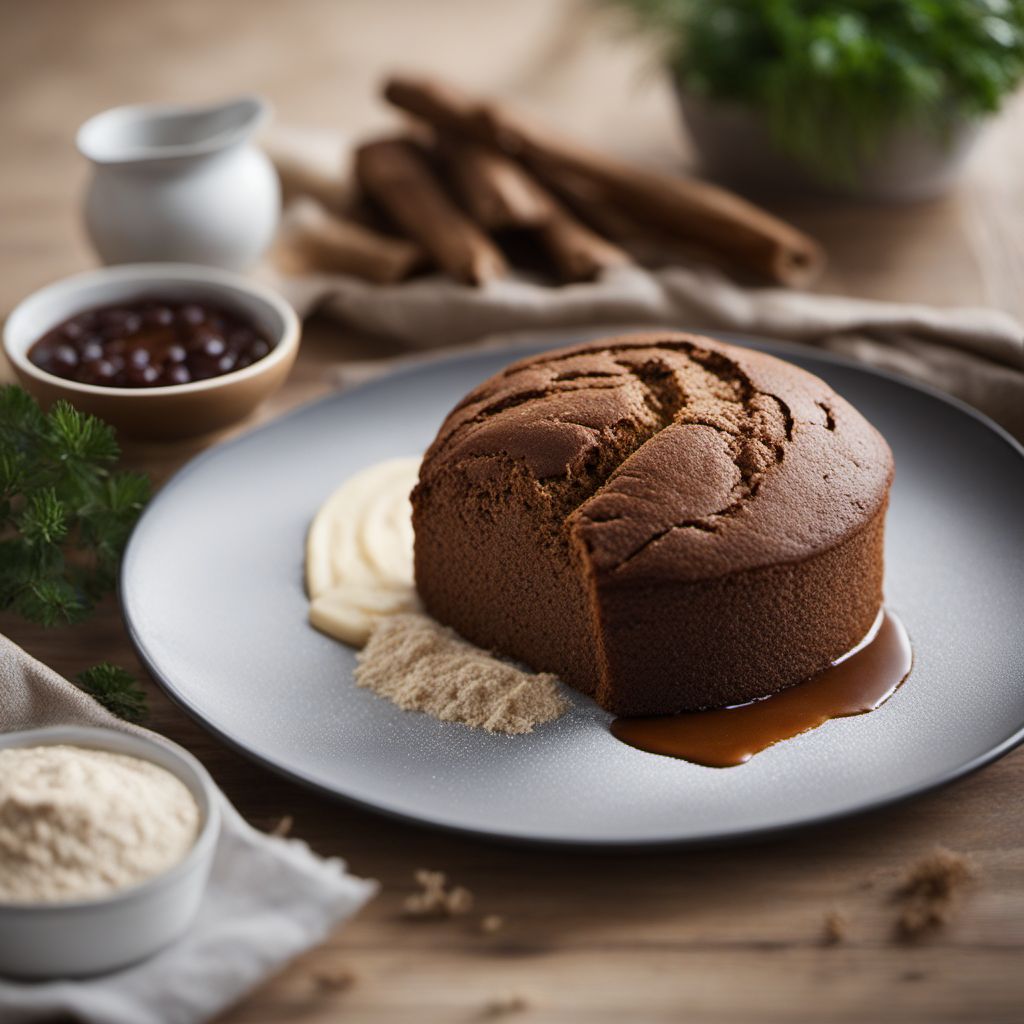
Recipe
Traditional Icelandic Rye Bread
Nordic Delight: Authentic Icelandic Rye Bread
4.2 out of 5
Indulge in the rich flavors of Icelandic cuisine with this traditional recipe for Rúgbrauð. This hearty and dense rye bread is a staple in Icelandic households, known for its unique baking method and distinct taste.
Metadata
Preparation time
15 minutes
Cooking time
2 hours (traditional method) or 1 hour (oven method)
Total time
2 hours 15 minutes (traditional method) or 1 hour 15 minutes (oven method)
Yields
8 servings
Preparation difficulty
Easy
Suitable for
Vegetarian, Vegan (if using plant-based buttermilk and butter substitute), Dairy-free (if using plant-based buttermilk and butter substitute), Nut-free, Low-fat
Allergens
Gluten, Dairy
Not suitable for
Gluten-free (contains rye and wheat flour), Keto, Paleo, High-protein, Low-carb
Ingredients
-
500g (4 cups) rye flour 500g (4 cups) rye flour
-
250g (1 cup) whole wheat flour 250g (1 cup) whole wheat flour
-
2 tsp baking powder 2 tsp baking powder
-
1 tsp salt 1 tsp salt
-
500ml (2 cups) buttermilk 500ml (2 cups) buttermilk
-
100g (1/2 cup) dark brown sugar 100g (1/2 cup) dark brown sugar
-
100g (1/2 cup) molasses 100g (1/2 cup) molasses
-
50g (1/4 cup) unsalted butter, melted 50g (1/4 cup) unsalted butter, melted
Nutrition
- Calories: 250 kcal / 1046 KJ
- Fat: 4g (1g saturated)
- Carbohydrates: 50g (20g sugars)
- Protein: 6g
- Fiber: 6g
- Salt: 1g
Preparation
-
1.Preheat the oven to 180°C (350°F). If using the traditional method, preheat the oven to 120°C (250°F) and place a large pot with a tight-fitting lid inside.
-
2.In a large mixing bowl, combine the rye flour, whole wheat flour, baking powder, and salt.
-
3.In a separate bowl, whisk together the buttermilk, dark brown sugar, molasses, and melted butter until well combined.
-
4.Gradually pour the wet ingredients into the dry ingredients, stirring until a sticky dough forms.
-
5.If using the traditional method, transfer the dough into the preheated pot. If using the oven method, transfer the dough into a greased loaf pan.
-
6.Bake the bread in the preheated oven for 2 hours if using the traditional method, or 1 hour if using the oven method.
-
7.Remove the bread from the pot or loaf pan and let it cool completely on a wire rack before slicing.
Treat your ingredients with care...
- Rye flour — Make sure to use a good quality rye flour for the best flavor and texture.
- Buttermilk — If you don't have buttermilk, you can make a substitute by adding 1 tablespoon of lemon juice or vinegar to 1 cup of milk and letting it sit for 5 minutes before using.
- Molasses — Opt for unsulfured molasses for a more authentic flavor.
- Dark brown sugar — If you prefer a less sweet bread, you can reduce the amount of sugar used.
Tips & Tricks
- For a richer flavor, you can add a handful of raisins or chopped nuts to the dough before baking.
- To achieve a darker crust, brush the top of the bread with a mixture of molasses and water before baking.
- Store the bread in an airtight container to keep it fresh for several days.
- Rúgbrauð is traditionally served thinly sliced and toasted, topped with butter and Icelandic smoked fish.
- If you prefer a softer crust, wrap the bread in a clean kitchen towel while it cools.
Serving advice
Serve the Rúgbrauð as a side dish with traditional Icelandic meals, such as smoked fish, lamb stew, or pickled herring. It can also be enjoyed on its own, sliced and spread with butter or your favorite toppings.
Presentation advice
To showcase the rustic charm of this traditional Icelandic bread, present it on a wooden cutting board or a traditional Icelandic plate. You can garnish the plate with fresh herbs or a sprinkle of rye flour for an authentic touch.
More recipes...
For Rúgbrauð
For Icelandic cuisine » Browse all
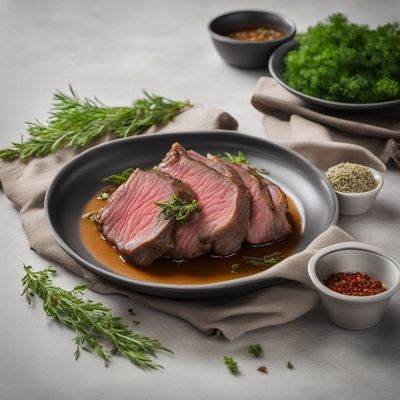
Icelandic Lamb Svið with Herb-infused Gravy
Savor the Traditional Icelandic Delight: Herb-infused Lamb Svið
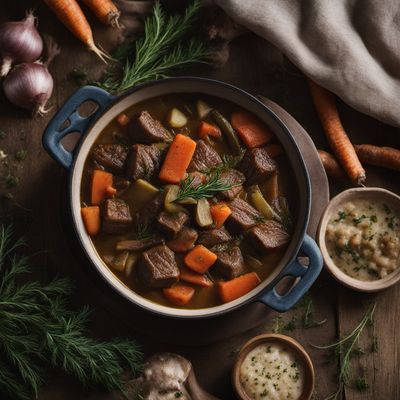
Icelandic-Inspired Hearty Lamb Stew
Sjávarfangsríkur Lambakjötssúpa - A Taste of Icelandic Sea and Land
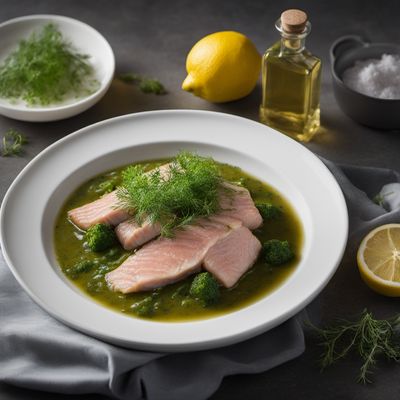
Kissuto Rombo with Icelandic Twist
Icelandic Rombo Delight: A Fusion of Filipino and Icelandic Flavors
More Icelandic cuisine dishes » Browse all

Kjötsúpa
Lamb soup
Kjötsúpa is a traditional Icelandic dish that is typically served during the colder months of the year. It is a hearty and flavorful soup that is...
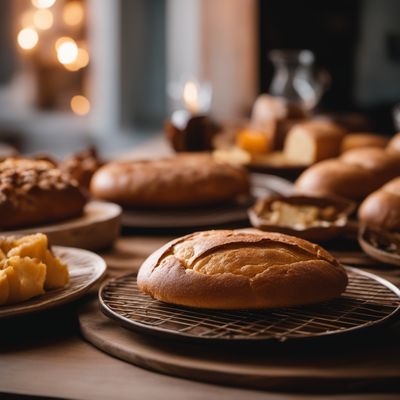
Laufabrauð
Laufabrauð is a traditional Icelandic Christmas bread that is thin and crispy. It is made by rolling out dough very thinly and then cutting it...

Vínarterta
Vínarterta is a traditional Icelandic cake that is typically served during the Christmas season. It is made with layers of thin cake and a sweet...



